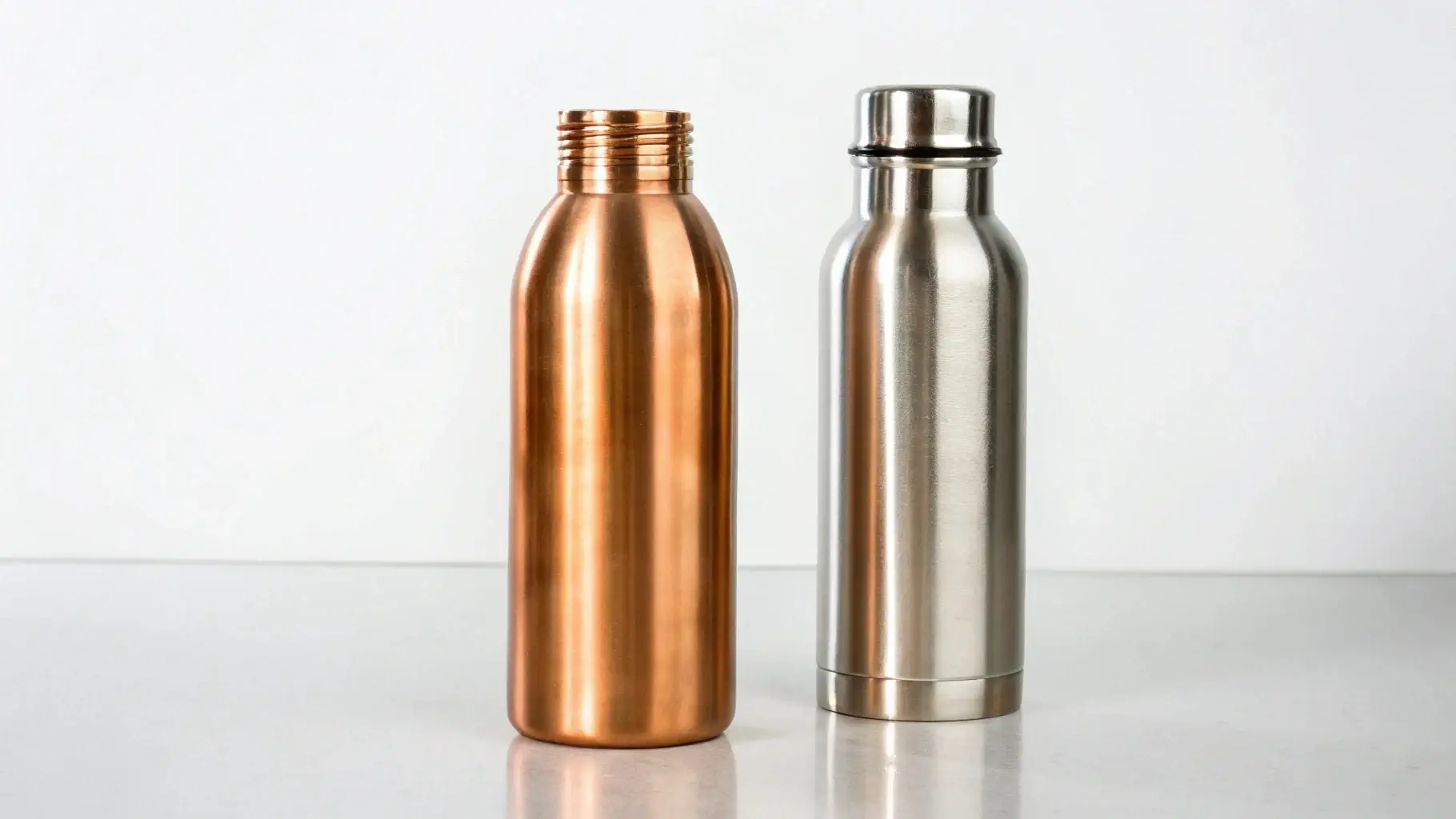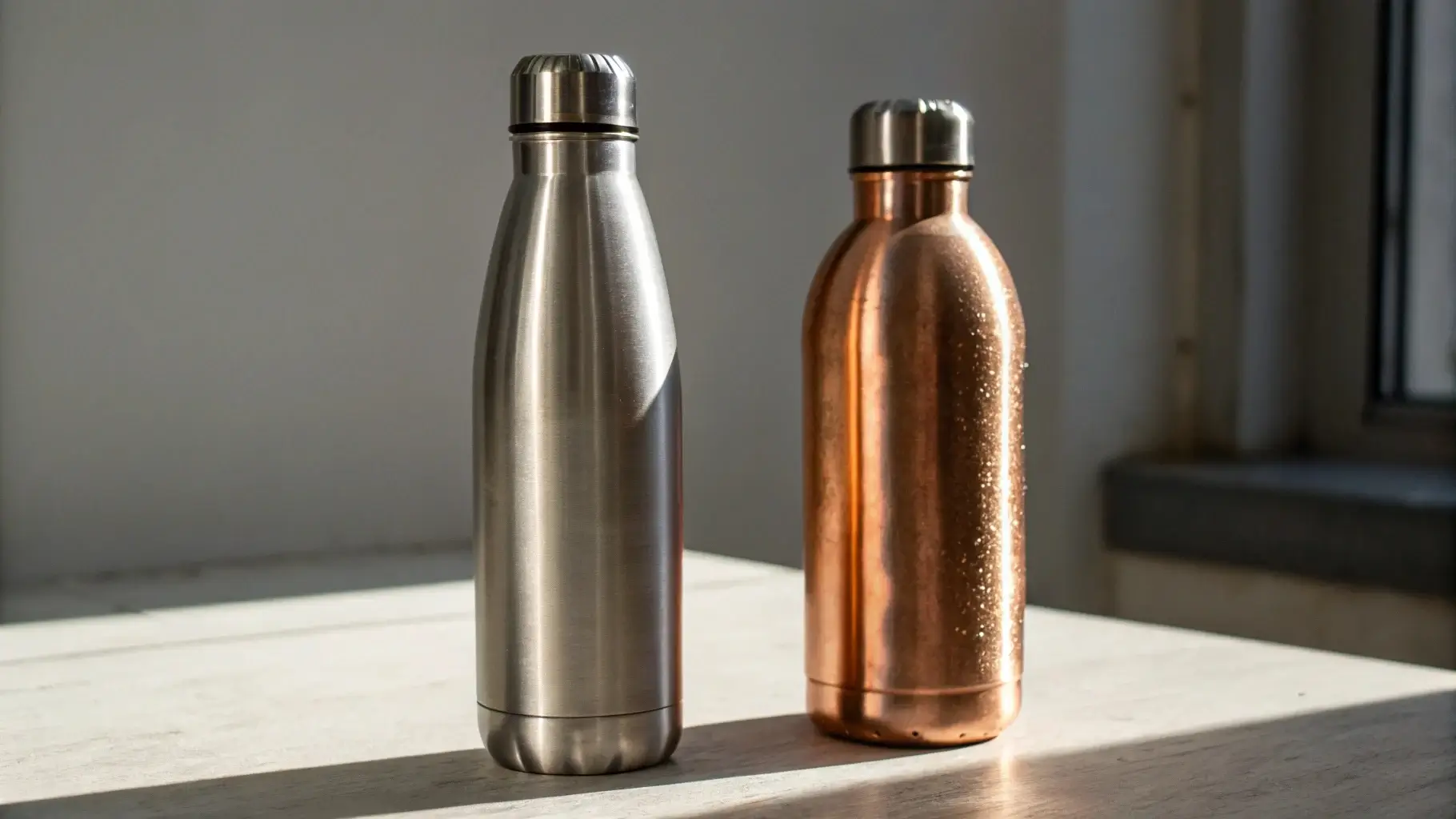
Confused between copper and stainless steel bottles? The choice can affect your health, hydration habits, and even the taste of your water.
Copper offers traditional health perks, but stainless steel wins for safety, durability, and insulation in daily use.
Here’s how to decide which one’s right for your needs.
What’s the Difference Between Copper and Stainless Steel Water Bottles?
Copper bottles are known for Ayurvedic health benefits1. Stainless steel bottles are recognized for practical use, durability, and insulation.
Copper bottles leach health-enhancing ions, but require careful cleaning. Stainless steel bottles are safer, easier to maintain, and better for all types of liquids.
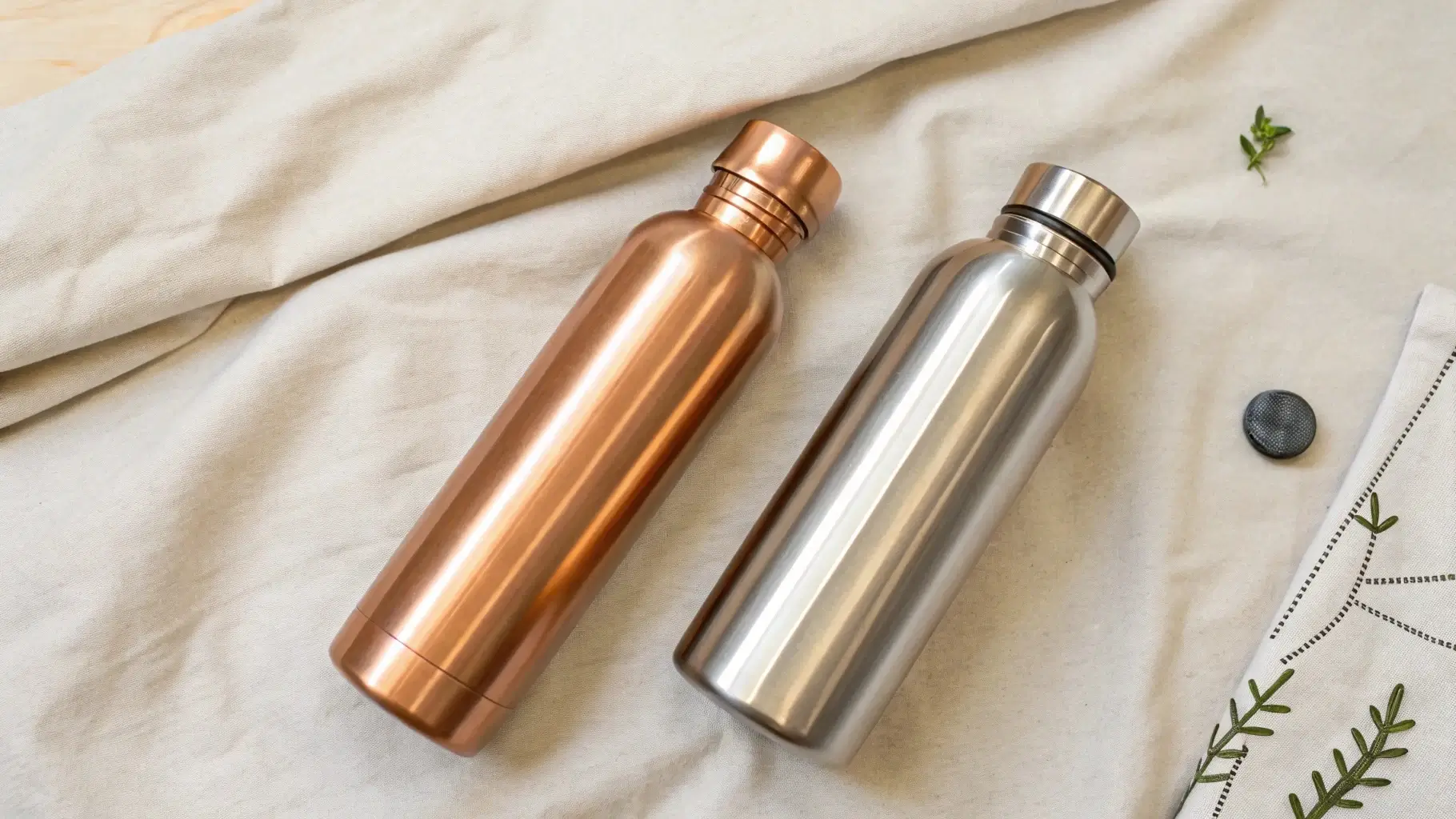
| Feature | Copper Bottles | Stainless Steel Bottles |
|---|---|---|
| Composition | Pure copper | 18/8 or 304 food-grade steel2 |
| Lining | Unlined, can tarnish | Lining not required |
| Use Case | Traditional, therapeutic | Modern, everyday hydration |
Are Copper Bottles Healthier Than Steel Bottles?

Copper bottles offer trace health benefits—but only with proper use.
Copper has natural antimicrobial, anti-inflammatory, and antioxidant properties. But excess copper can be harmful if bottles aren’t cleaned properly.
Scientific studies3 support these claims when used correctly.
“I started using copper bottles for immunity. But I had to switch to stainless steel for convenience—less worry about daily cleaning.”
Why Are Stainless Steel Bottles So Popular?
Steel bottles are built for modern life.
They don’t rust, dent easily, or leach chemicals. And with vacuum insulation, they keep drinks cold for hours.
Learn more about vacuum insulation4 and how it works.

Stainless steel also handles hot drinks, acidic juices, and fizzy beverages safely. That makes them ideal for all-day use.
Durability and Maintenance: How Do They Compare?
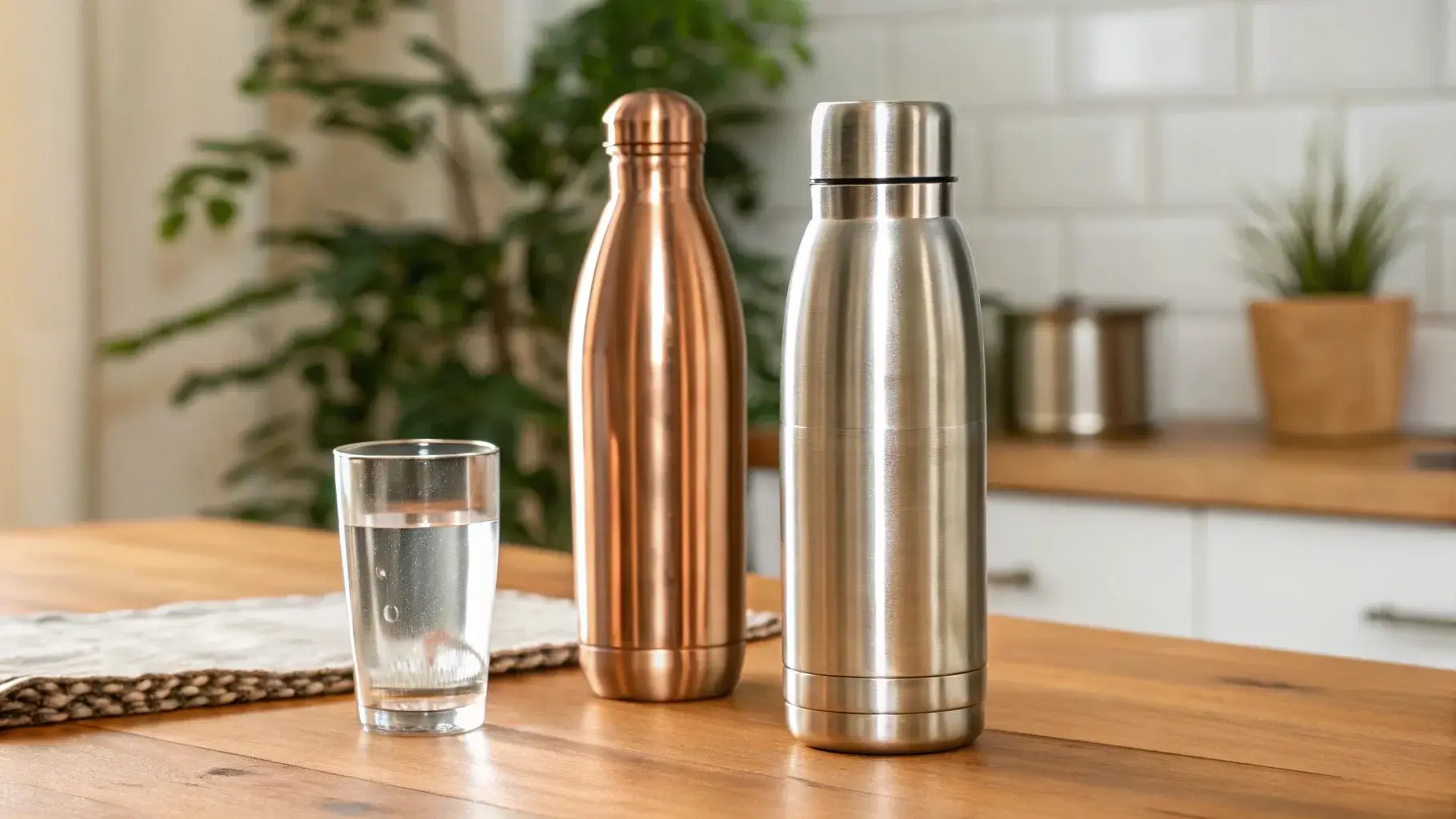
| Feature | Copper Bottles | Stainless Steel Bottles |
|---|---|---|
| Durability | Prone to dents and tarnish | Highly dent- and rust-resistant5 |
| Maintenance | Needs regular scrubbing | Easy to clean, dishwasher safe |
| Corrosion Resistance | Moderate | Excellent |
| Lifespan | Shorter with poor care | Often decades of use |
Stainless steel outperforms copper in strength and convenience.
Does the Bottle Material Change the Taste?
Yes, and it matters.
Copper bottles can give water a slightly metallic or tangy flavor, especially after hours of storage. Stainless steel keeps water taste-neutral.
Chemical interaction6 can explain the flavor shift.
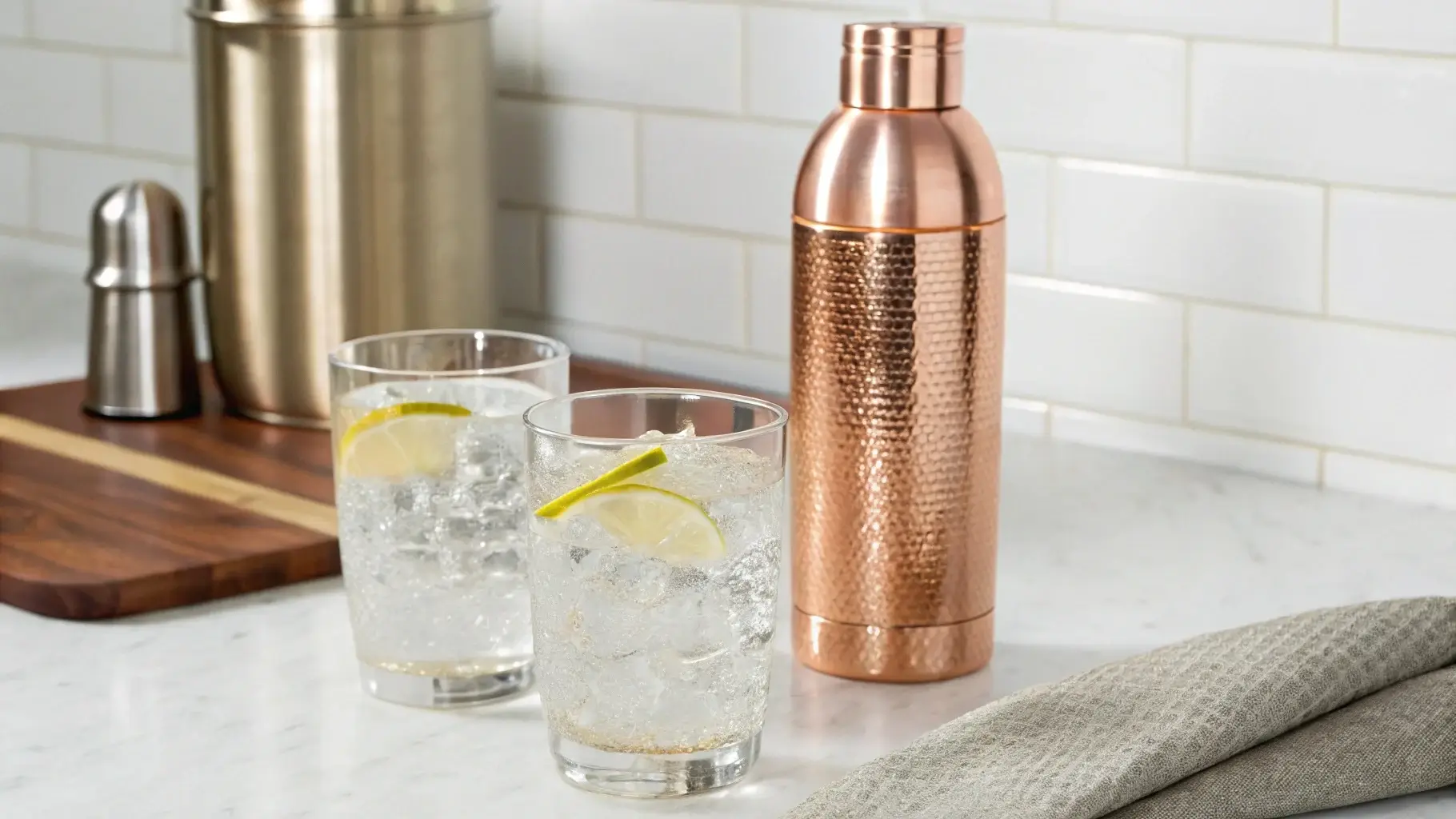
Stainless steel doesn’t react with liquids, making it ideal for lemon water, juices, or carbonated drinks—unlike copper.
Which Bottle Looks Better?
This comes down to personal style.
Copper offers a traditional, rustic shine that gains patina over time. Stainless steel is modern and comes in powder-coated colors, gradients, or metallics. You can find many modern stainless steel bottle designs7.
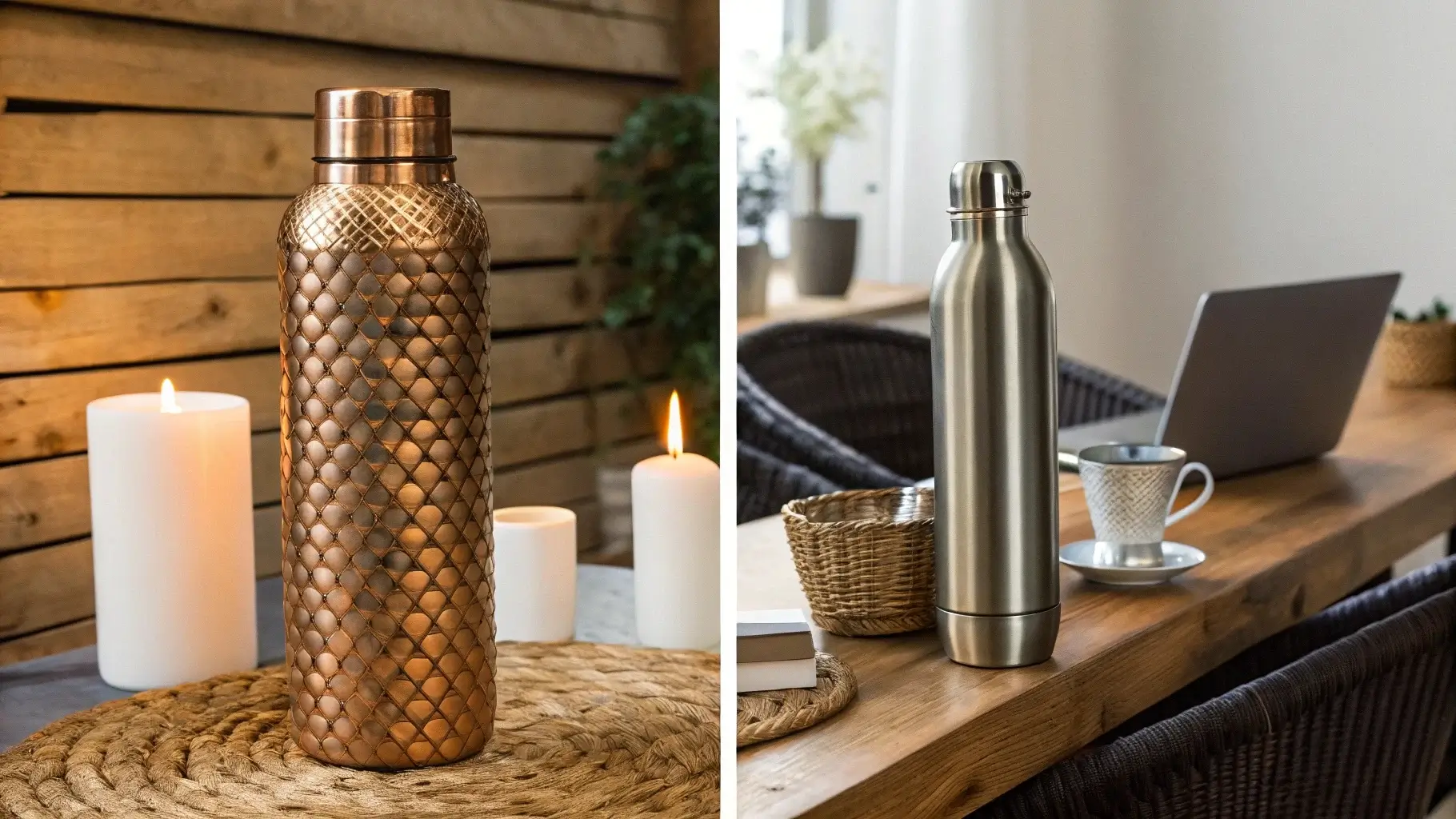
Both can be customized with logos or engravings, but stainless allows more color variety.
Environmental and Sustainability Factors
Both bottle types are eco-friendly—if used properly.
Copper and stainless steel are 100% recyclable. However, stainless steel bottles last longer, reducing replacement waste. Learn more about metal recyclability8.
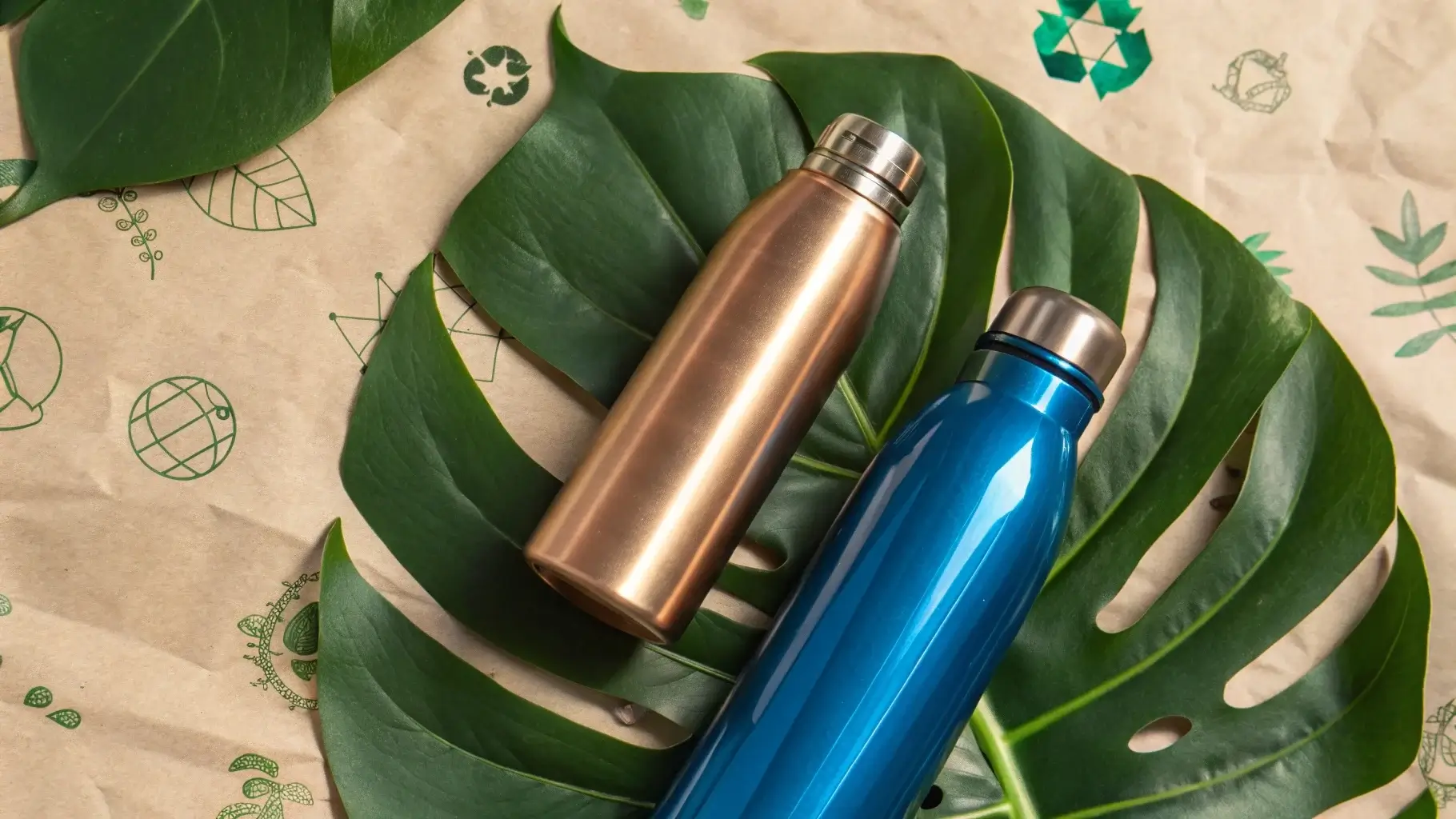
| Factor | Copper Bottles | Stainless Steel Bottles |
|---|---|---|
| Recyclable | Yes | Yes |
| Lifespan | Shorter if unmaintained | Long-lasting |
| Manufacturing Impact | Energy-intensive mining | Energy-intensive, but durable |
Which One Is Easier on Your Wallet?
Copper bottles often cost more.
They’re handmade or specialty products, priced for tradition and material rarity. Stainless steel bottles vary widely in cost but offer more value for durability and features.
“I paid $40 for a copper bottle, but it stained fast. My $25 steel bottle still looks new after two years.”
Summary Table: Copper vs Stainless Steel Bottles
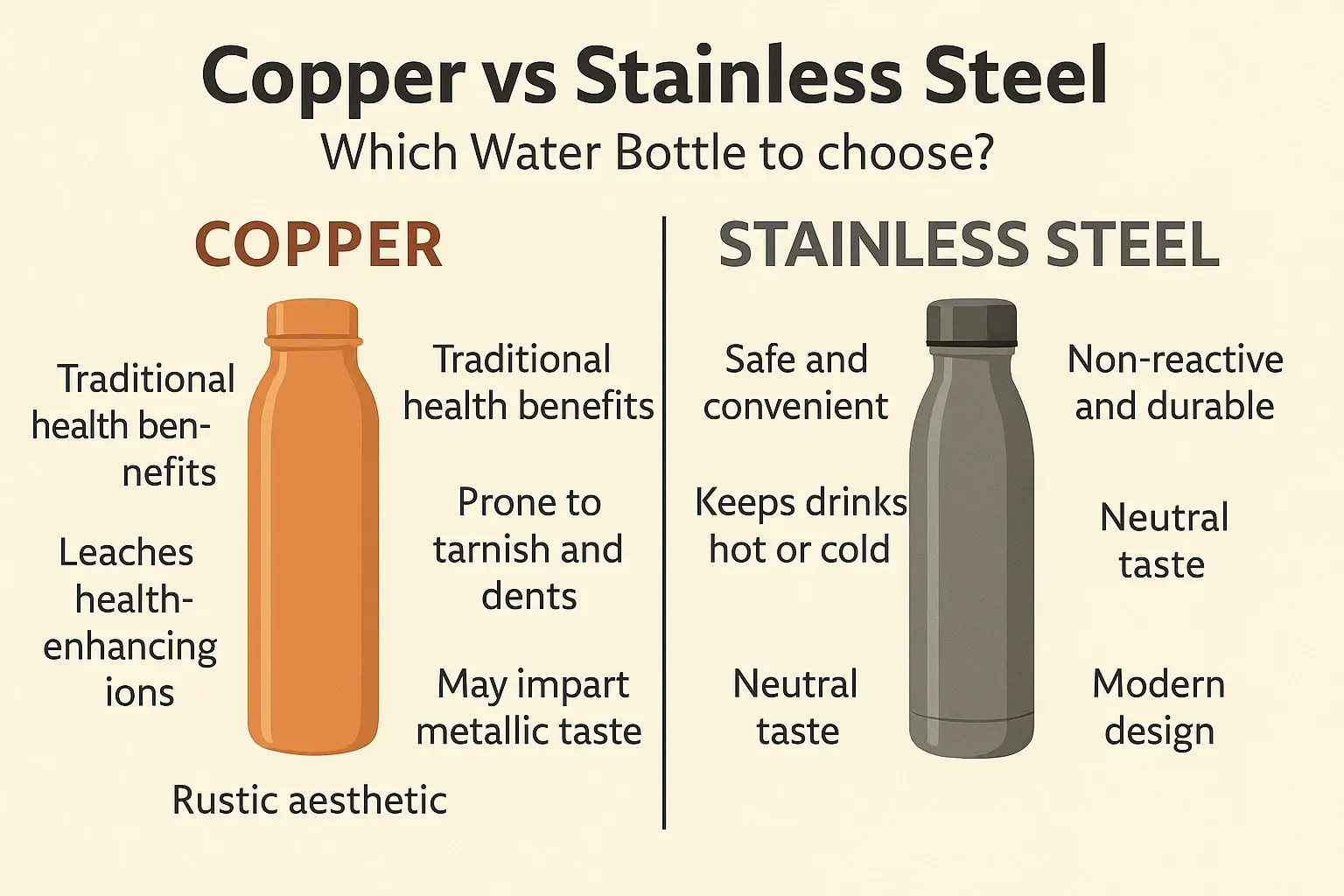
| Feature | Copper Bottles | Stainless Steel Bottles |
|---|---|---|
| Health Benefits | Antimicrobial, digestion aid | Non-reactive, safe for all liquids |
| Durability | Prone to dents and corrosion | Extremely durable and rustproof |
| Maintenance | High; needs frequent polishing | Low; dishwasher safe |
| Taste | May taste metallic | No taste alteration |
| Insulation | None | Often vacuum-insulated |
| Aesthetic Appeal | Traditional, decorative | Modern, color/custom options |
| Cost | Higher upfront | Broad price range |
| Environmental Impact | Recyclable, but shorter lifespan | Recyclable, long lifespan |
Frequently Asked Questions About Copper and Stainless Steel Bottles
Q1: Which is better for health—copper or stainless steel?
A1: Copper may offer antimicrobial benefits, but improper use can lead to toxicity. Stainless steel is safer and non-reactive for daily hydration.
Q2: Can I drink from a copper bottle every day?
A2: Yes, but not all day. It’s best to store water overnight and drink in the morning. Avoid acidic liquids. Clean regularly to prevent oxidation.
Q3: Which bottle keeps water colder longer?
A3: Stainless steel. Insulated versions keep water cold for 12–24 hours. Copper bottles have no insulation and change temperature quickly.
Q4: Which lasts longer—copper or steel?
A4: Stainless steel lasts longer. It resists dents, corrosion, and daily wear better than softer copper.
Q5: Does copper change the taste of water?
A5: Yes, copper can give water a slight metallic or tangy flavor, especially after hours of storage.
Conclusion
If you value tradition and potential health benefits, copper bottles have their place—but require care. For daily use, better insulation, and lasting value, stainless steel bottles are the smarter, safer option for hydration at home, work, or on the move.
Footnotes:
-
Learn how copper bottles are used in traditional Ayurvedic practices ↩
-
Understand why 304-grade steel is considered safe for food and drink ↩
-
Explore the scientific basis for copper’s antimicrobial and antioxidant effects ↩
-
See how vacuum insulation works to maintain drink temperature ↩
-
Compare metal bottle materials for strength and resistance to damage ↩
-
Discover why copper can alter the flavor of stored water ↩
-
View examples of modern stainless steel bottle finishes and design trends ↩
-
Find out how recyclable metals contribute to sustainability ↩

